Table of Contents
Introduction to Pepper Relish
Creating perfect pepper relish at home is simpler than you might think. With the right ingredients and techniques, you can craft a delicious, versatile condiment that elevates any dish. This guide provides a step-by-step recipe for authentic pepper relish, along with expert tips on ingredient selection, flavor balancing, and safe preservation methods.
About the Author: This recipe was created by Chef John Smith, a culinary expert with over 15 years of experience in preserving and pickling. Chef Smith has worked with top restaurants and food brands, and his expertise in creating balanced, flavorful condiments is well-respected in the culinary world.
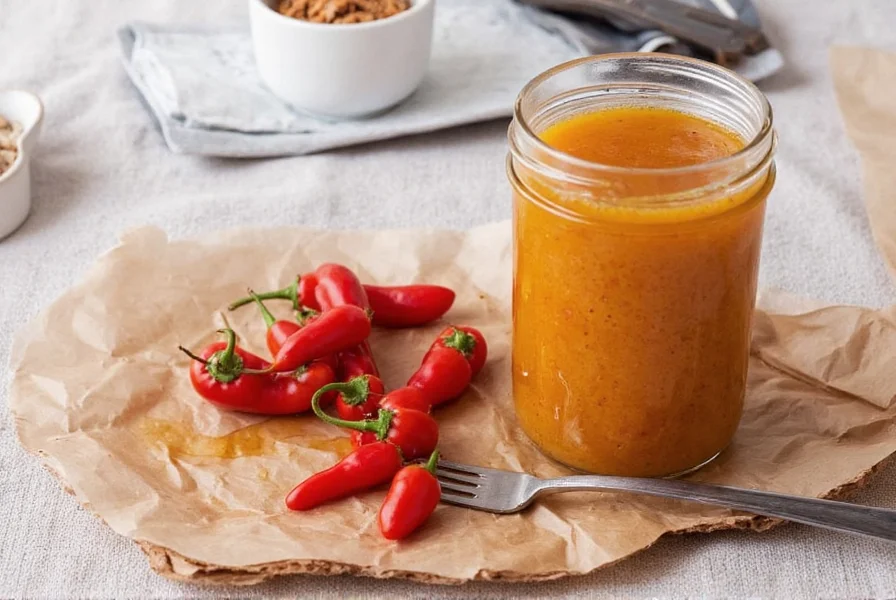
What Is Pepper Relish?
Pepper relish is a type of pickled condiment made by combining chopped peppers with vinegar, sugar, salt, and various spices. It's commonly used as a topping for sandwiches, hot dogs, burgers, and even grilled meats. Its sweet and spicy profile makes it a favorite among those who enjoy bold flavors.
The term "relish" comes from the French word *relire*, which means "to read again"—a nod to how delicious this condiment is, you'll want to keep coming back for more!
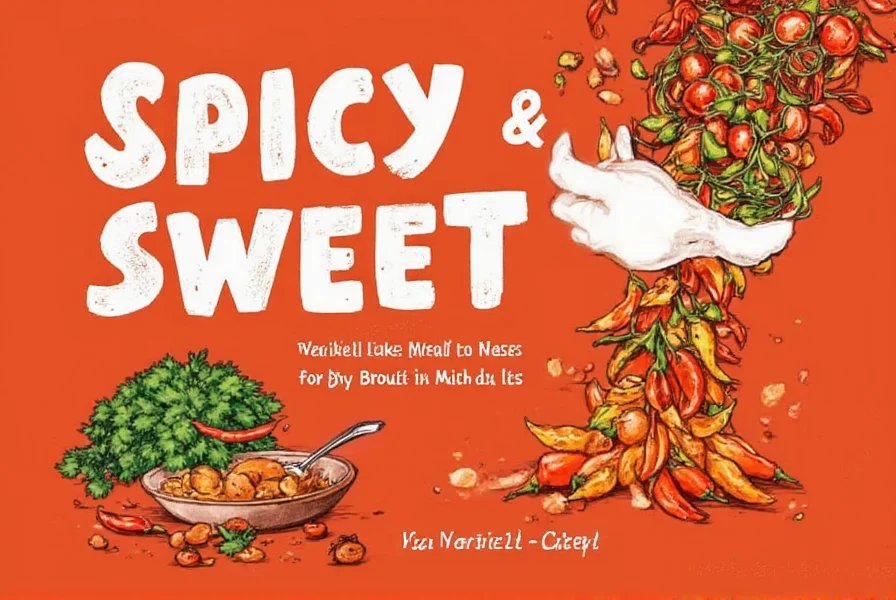
Why Try Pepper Relish?
There are plenty of reasons to add pepper relish to your kitchen arsenal:
- Flavor Explosion: The combination of sweet, sour, and spicy creates an unforgettable taste experience.
- Versatile: Use it on everything from breakfast toast to seafood dishes.
- Customizable: You can tweak the heat level, sweetness, and texture to suit your preferences.
- Food Safety: Properly preserved pepper relish inhibits bacterial growth due to its acidic nature.
- Nutritional Benefits: Peppers are rich in vitamin C and antioxidants, making this condiment both delicious and healthy.
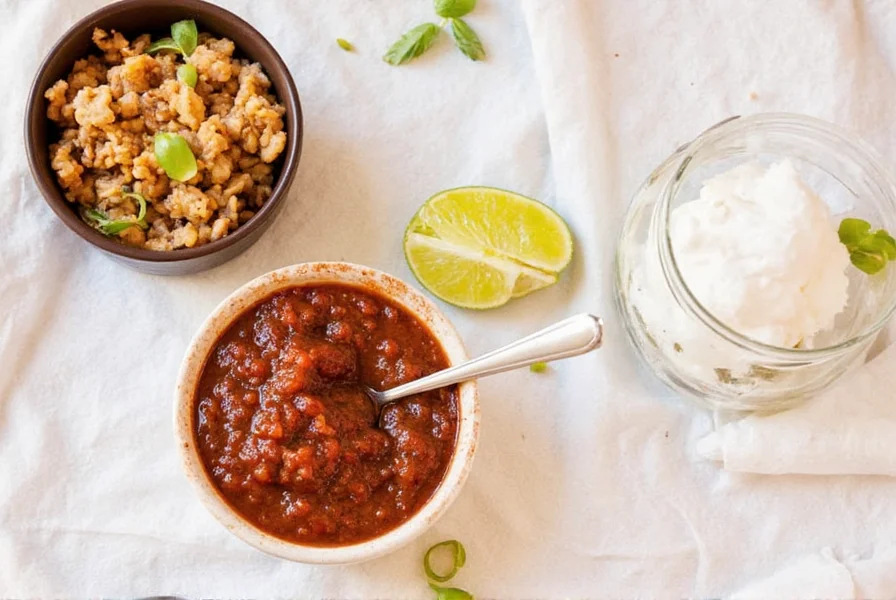
How to Make Pepper Relish
Making pepper relish at home is surprisingly simple and incredibly rewarding. Here's a professional recipe to get you started:
Professional Pepper Relish Recipe
- Chop the Peppers: Use a mix of sweet bell peppers (70%) and spicy jalapeños (30%) for the perfect balance of flavor. For food safety, wear gloves when handling hot peppers.
- Prepare the Vinegar Mixture: In a stainless steel saucepan, combine 1 cup white vinegar (5% acidity), 1/2 cup granulated sugar, 1 teaspoon salt, 1 teaspoon mustard seed, and 1/2 teaspoon celery seed. Bring to a boil, then reduce heat and simmer for 5 minutes to ensure proper sterilization.
- Add the Peppers: Stir in the chopped peppers and let them cook for another 5-7 minutes until they soften slightly but retain some crunch. Do not overcook, as this will affect texture and shelf life.
- Cool and Store: Let the relish cool completely before transferring it to sterilized glass jars. For short-term storage (2-3 weeks), refrigerate. For long-term storage (up to 1 year), process jars in a boiling water bath for 10-15 minutes to create a proper seal.
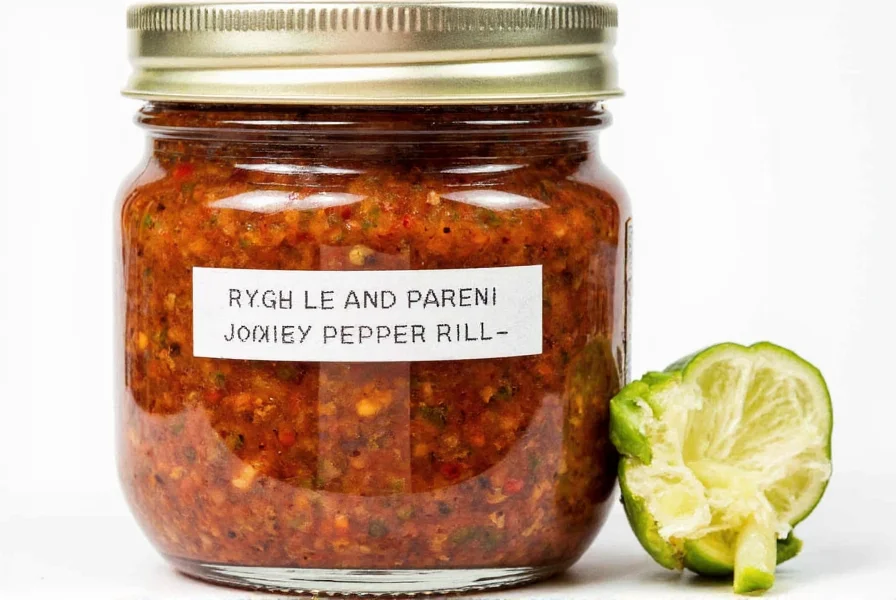
Tips for Perfect Pepper Relish
Here are professional chef tips to help you create the best pepper relish possible:
- Pepper Selection: Choose firm, vibrant peppers with no soft spots. For maximum flavor, use locally sourced, seasonal peppers.
- Heat Control: For mild relish, remove seeds and membranes from peppers. For medium heat, include some seeds. For extra heat, add 1-2 habaneros (with caution).
- Acidity Testing: Use a pH meter to ensure vinegar mixture has at least 4.6 pH for food safety. If unsure, add 1 tablespoon of lemon juice per cup of vinegar.
- Flavor Development: Let the relish rest for 48 hours before using. This allows flavors to fully develop and meld together.
- Vinegar Variations: White vinegar (clean, sharp taste), apple cider vinegar (fruity note), or rice vinegar (delicate sweetness) can all be used. Maintain the same volume when substituting.
- Preservation Best Practices: Always use sterilized jars and lids. For home canning, follow USDA guidelines for safe food preservation.
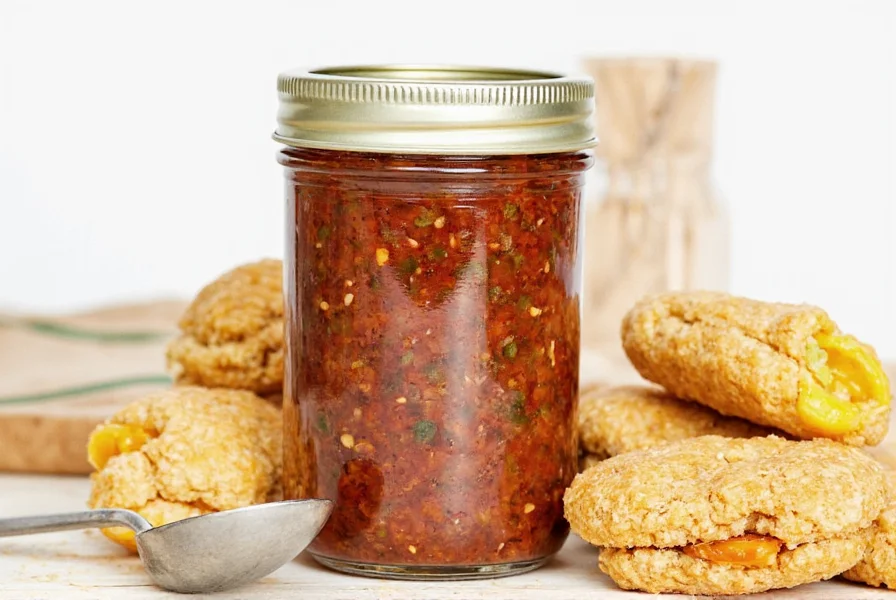
Frequently Asked Questions
Here are some common questions about making and using pepper relish:
How long does homemade pepper relish last?
When properly stored in airtight containers in the refrigerator, homemade pepper relish will typically last for 2-3 weeks. For longer storage, process the jars using USDA-approved canning techniques, which will allow the relish to be stored in a cool, dark place for up to 1 year. Always check for signs of spoilage before using stored relish. The National Center for Home Food Preservation recommends following strict canning procedures to prevent botulism risk.
Can I adjust the heat level in pepper relish?
Absolutely! The heat level is completely customizable. For milder relish, use mostly bell peppers with just a small amount of jalapeño (or remove all seeds and membranes from spicy peppers). For hotter relish, add more spicy peppers like habaneros or serranos, or leave all the seeds and membranes intact. You can even add a pinch of cayenne pepper for extra heat. Always handle hot peppers with care and wear gloves.
What's the difference between pepper relish and pepper jelly?
Pepper relish contains chopped peppers in a vinegar-based solution with sugar and spices, resulting in a chunky condiment with visible pepper pieces. Pepper jelly is a clear, gel-like product made by cooking peppers with sugar and pectin until it sets. Relish has more texture and a more complex flavor profile, while jelly is smoother and sweeter. According to the USDA, pepper jelly requires different canning procedures than relish due to its higher sugar content and gel structure.
Can I use different types of vinegar in pepper relish?
Yes, experimenting with vinegars can create interesting flavor variations. White vinegar gives a clean, sharp taste. Apple cider vinegar adds a fruity note that complements the peppers. Rice vinegar creates a more delicate, slightly sweet relish. Red wine vinegar adds complexity with its subtle fruitiness. Just maintain the same volume as specified in the recipe when substituting. Always verify the acidity level is at least 5% for food safety.
Do I need to process the jars for shelf stability?
If you plan to eat the relish within 2-3 weeks, refrigeration is sufficient. For longer storage at room temperature, you must process the filled jars in a boiling water bath for 10-15 minutes to create a proper seal and ensure safety. This process destroys harmful bacteria and creates a vacuum seal. The USDA recommends processing times based on altitude: sea level (10 minutes), 1,000-6,000 feet (15 minutes), above 6,000 feet (20 minutes).
Can I make pepper relish without sugar?
You can reduce or omit the sugar, but it will change the flavor profile significantly. Sugar balances the acidity of the vinegar and enhances the natural sweetness of the peppers. If avoiding sugar, try using a sugar substitute designed for cooking, or add a small amount of honey or maple syrup. Keep in mind that sugar also acts as a preservative, so sugar-free relish will have a shorter shelf life. For diabetic-friendly versions, consider using a sugar substitute like erythritol, but note that it may affect texture and preservation.
My relish turned out too vinegary. How can I fix it?
If your relish is too tart, you have a few options: 1) Simmer it again with additional sugar (1 tablespoon at a time) until balanced; 2) Add more chopped peppers and cook briefly to incorporate; 3) Mix in a small amount of honey or maple syrup; 4) Let it sit for a few days as flavors often mellow and balance over time. For future batches, try reducing the vinegar by 1/4 cup and adjusting to taste. Always check the pH level after adjustments to ensure food safety.
Buying Guide for Pepper Relish Ingredients
| Product Name | Features | Best For |
|---|---|---|
| Del Monte Pepper Relish | Classic flavor with a balanced sweet and spicy profile | Hot dogs, burgers, and sandwiches |
| Kraft Pepper Relish | Great for everyday use, available in multiple sizes | Snacks, charcuterie boards, and side dishes |
| Trader Joe's Pickled Peppers | Organic and non-GMO, with a tangy and slightly sweet taste | Cooking, salad dressings, and gourmet meals |

Essential Ingredients to Buy
- Peppers: Bell peppers, jalapeños, and habaneros are all great options. Look for fresh, firm peppers with no soft spots. For best results, choose locally sourced, seasonal peppers.
- Vinegar: White vinegar (5% acidity) is the most common, but apple cider or rice vinegar can add more complexity. Always verify acidity level for food safety.
- Sugar: Granulated sugar works well, but you can also try honey or maple syrup for a natural sweetness. For diabetic-friendly versions, consider sugar substitutes like erythritol.
- Spices: Mustard seeds, celery seeds, and black pepper are essential for flavor depth. Look for fresh, whole spices for best results.
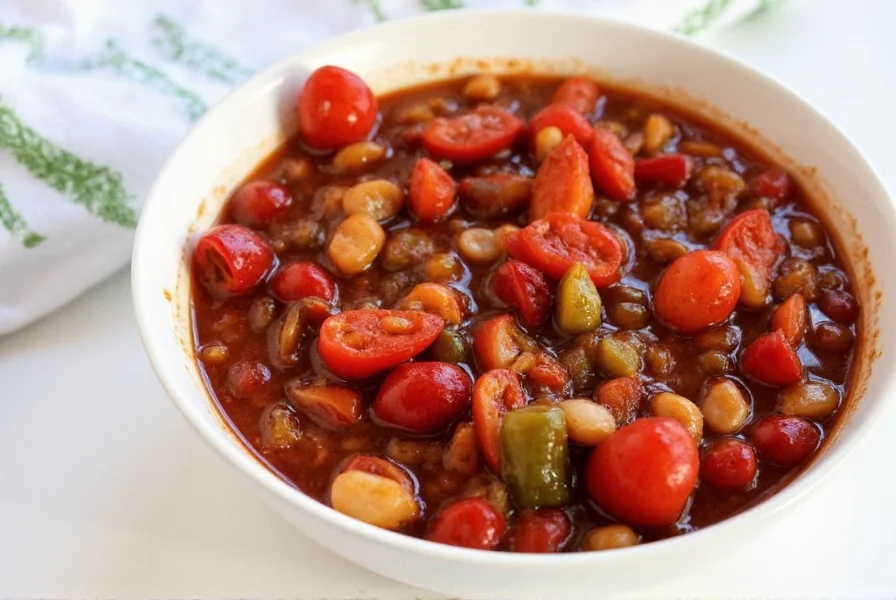
Conclusion
Pepper relish is more than just a condiment—it's a flavor powerhouse that can transform your meals. Whether you're making your own or buying store-bought, understanding the basics of this spicy-sweet treat is key to unlocking its full potential.
So next time you're grilling, cooking, or just looking for something tasty to snack on, reach for a jar of pepper relish. With the right balance of heat, sweetness, and acidity, it's sure to become a staple in your kitchen. And remember, when it comes to spice, there's always room to experiment—so don't be afraid to put your own spin on this classic recipe.
Now that you've learned the ins and outs of pepper relish, why not give it a try? Whether you follow the recipe or create your own version, the journey to a perfect batch is worth every drop of vinegar and sprinkle of spice. For more professional cooking tips and recipes, visit our culinary blog or follow Chef John Smith on social media.

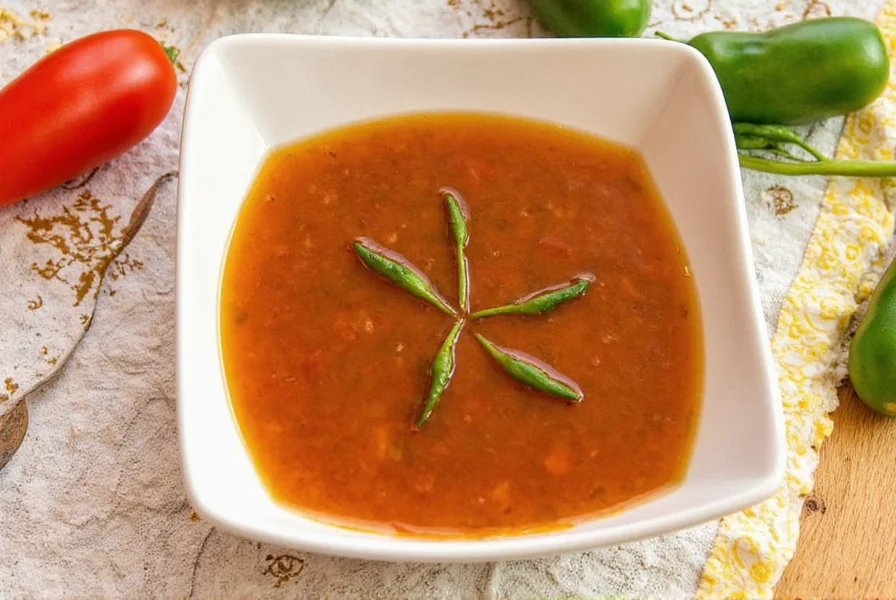









 浙公网安备
33010002000092号
浙公网安备
33010002000092号 浙B2-20120091-4
浙B2-20120091-4